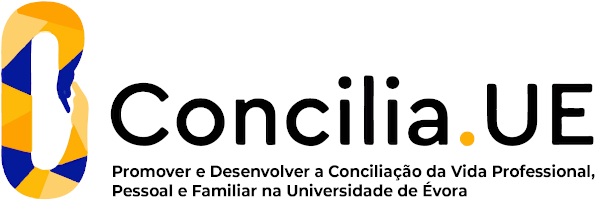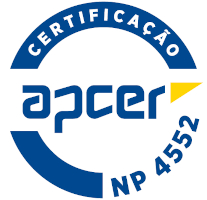2024
Demography
Name: Demography
Code: SOC02385L
6 ECTS
Duration: 15 weeks/156 hours
Scientific Area:
Sociology
Teaching languages: Portuguese
Languages of tutoring support: Portuguese
Regime de Frequência: Presencial
Sustainable Development Goals
Learning Goals
This is an introductory course in demographic methods, teaching how to measure population growth and age structure, mortality, fertility and migration. It aims to develop skills for thinking systematically about population problems in Portugal, in Europe and the World.
The course provides an introduction to the causes and consequences of population change from a social and historical perspective. Topics include: demographic transition, aging, international migration and population policy.
At the end of the course students will be able to:
- Demonstrate understanding of demographic patterns, processes and trends;
- Demonstrate a basic knowledge of data sources and methods used in demographic analysis;
- Demonstrate ability to apply method and data appropriately to answer nowadays demographic questions;
- Interpret the output of demographic analysis appropriately;
-- Understand how demographic changes are crucial to our understanding of
The course provides an introduction to the causes and consequences of population change from a social and historical perspective. Topics include: demographic transition, aging, international migration and population policy.
At the end of the course students will be able to:
- Demonstrate understanding of demographic patterns, processes and trends;
- Demonstrate a basic knowledge of data sources and methods used in demographic analysis;
- Demonstrate ability to apply method and data appropriately to answer nowadays demographic questions;
- Interpret the output of demographic analysis appropriately;
-- Understand how demographic changes are crucial to our understanding of
Contents
Module 1- Population Growth and Age Structure Analysis
Data and sources of demographic knowledge; The balancing equation for populations; Exponential growth;
The Growth rate r; Doubling times; Age and sex composition; Age Pyramids; Dependency Ratios; Population
Momentum.
Module 2 Periods and Cohorts
Lexis Diagrams; The Synthetic Cohort; Period-Persons Years Lived; The Crude Rate Model; The Infant
Mortality Rate
Module 3 Cohort and Period Mortality
Cohort survival; Probabilities of dying; Cohort Life Table and Period Life Table
Module 4 Cohort and Period Fertility
Cohort fertility and Parity; Period Measures; Period Age-Specific Fertility; Period NRR, TFR and GRR; Agestandardized
Rates.
Module 5 - Location and Migration
Population Distribution by Geographic Areas; Internal Migration and Short-Distance Mobility; International
Migration; Net Migration Estimation Methods.
Module 6 Causes and consequences of population change.
Data and sources of demographic knowledge; The balancing equation for populations; Exponential growth;
The Growth rate r; Doubling times; Age and sex composition; Age Pyramids; Dependency Ratios; Population
Momentum.
Module 2 Periods and Cohorts
Lexis Diagrams; The Synthetic Cohort; Period-Persons Years Lived; The Crude Rate Model; The Infant
Mortality Rate
Module 3 Cohort and Period Mortality
Cohort survival; Probabilities of dying; Cohort Life Table and Period Life Table
Module 4 Cohort and Period Fertility
Cohort fertility and Parity; Period Measures; Period Age-Specific Fertility; Period NRR, TFR and GRR; Agestandardized
Rates.
Module 5 - Location and Migration
Population Distribution by Geographic Areas; Internal Migration and Short-Distance Mobility; International
Migration; Net Migration Estimation Methods.
Module 6 Causes and consequences of population change.
Teaching Methods
Teaching methodology:
A mixture of theoretical and practical lectures and with support of e-learning tools.
Introductory concepts are given using real examples of different areas of applications to show the relevance of programmatic contents.
There are weekly exercises. Exercises focus on problem solving strategies to motivate students and to show the utility of demographic techniques.
A mixture of theoretical and practical lectures and with support of e-learning tools.
Introductory concepts are given using real examples of different areas of applications to show the relevance of programmatic contents.
There are weekly exercises. Exercises focus on problem solving strategies to motivate students and to show the utility of demographic techniques.
Assessment
Continuous Assessment:
Continuous assessment is divided into two evaluations, each contributing 50% to the final grade (2 hours of written exam for each).
Assessment by Exam (Regular Period or Others):
A written exam (2 hours) will be administered.
The written exams consist of direct or open-ended questions, following the format of exercises practiced in class, covering all the material taught throughout the semester.
As a preparation for the assessment, students should compile their work developed during the semester into an individual portfolio of practical assignments. This portfolio, based on exercises conducted in class, should be submitted for review by the instructor.
Continuous assessment is divided into two evaluations, each contributing 50% to the final grade (2 hours of written exam for each).
Assessment by Exam (Regular Period or Others):
A written exam (2 hours) will be administered.
The written exams consist of direct or open-ended questions, following the format of exercises practiced in class, covering all the material taught throughout the semester.
As a preparation for the assessment, students should compile their work developed during the semester into an individual portfolio of practical assignments. This portfolio, based on exercises conducted in class, should be submitted for review by the instructor.
Teaching Staff
- Filipe José Batista Ribeiro [responsible]





















